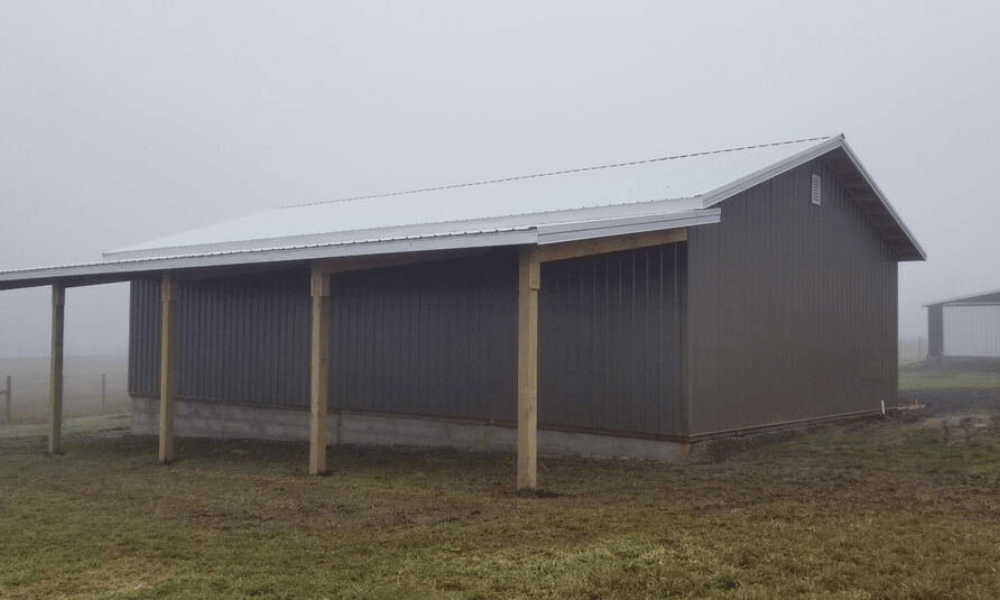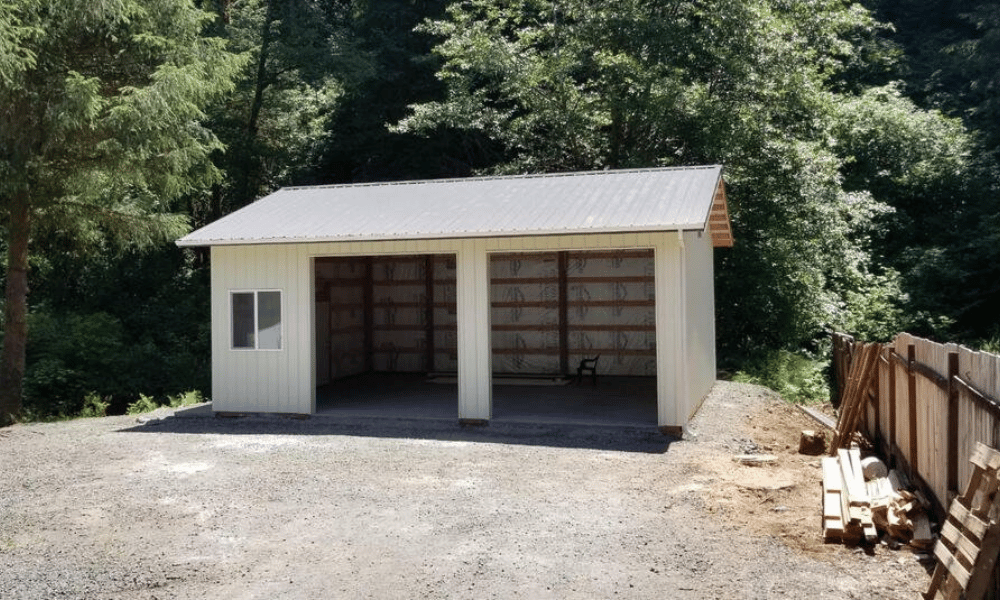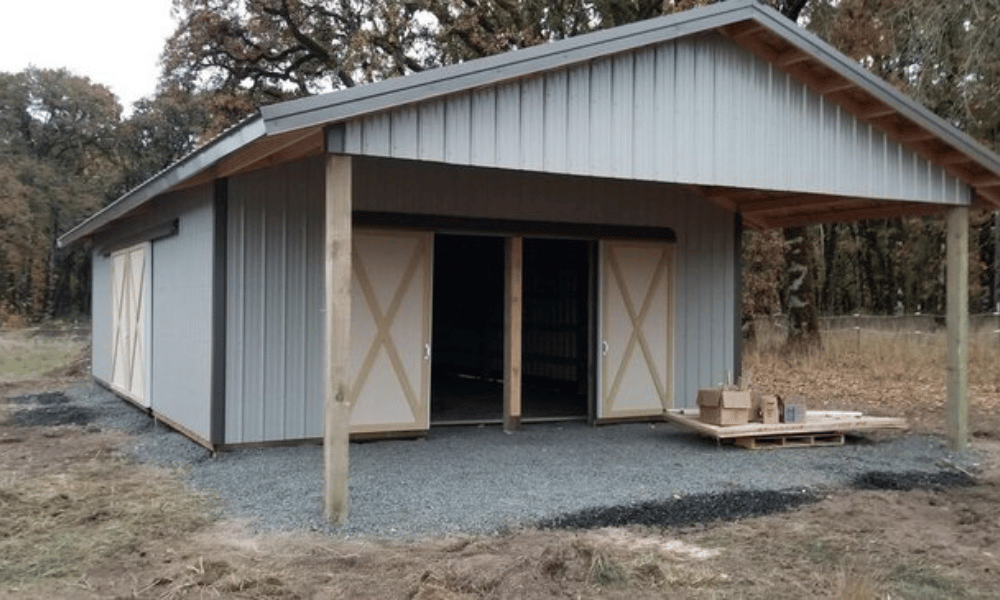Introduction
Building a pole barn garage is more than just creating a functional space for your vehicles, tools, and hobbies. It is an opportunity to embrace sustainable living by incorporating eco-friendly practices into your design. As we become increasingly aware of our environmental impact, the construction and design industry is evolving with innovative solutions that minimize waste, enhance energy efficiency, and promote sustainability.
In this article, we will dive deep into how to incorporate eco-friendly practices into your pole barn garage design. We'll explore various techniques, materials, and ideas that not only enhance the functionality of your space but also align with environmentally responsible principles.
Understanding Pole Barn Garages
What is a Pole Barn Garage?
A pole barn garage is constructed using a post-frame building technique where wooden posts are embedded in the ground or set on concrete footings. This method offers unparalleled flexibility in design and allows for larger open spaces without the need for interior load-bearing walls.
Benefits of Pole Barn Garages
Cost-Effectiveness: They often cost less to build compared to traditional garages. Versatile Designs: You can customize designs according to personal needs. Quick Construction: The post-frame method allows for quicker assembly. Eco-Friendly Options: With thoughtful planning, they can be designed sustainably.Initial Planning for Your Eco-Friendly Pole Barn Garage
Assessing Your Needs
Before diving into construction, take some time to assess your specific needs:
- What will you store in the garage? Will it serve as a workshop or storage area? How often will you utilize it?
Answering these questions helps tailor an eco-friendly design that meets function without compromising sustainability.
Choosing an Eco-Friendly Location
The site where you plan to build significantly impacts your garage's ecological footprint. Consider locations that:
- Minimize land disturbance Avoid wetlands or flood-prone areas Utilize existing structures or land features
Selecting Sustainable Materials for Your Pole Barn Garage
Wood Choices: Sustainably Sourced Timber
When selecting wood for your pole barn, prioritize sustainably sourced timber:
- Look for FSC (Forest Stewardship Council) certification. Opt for reclaimed wood when possible.
Metal Roofing: Energy-Efficient Solutions
Metal roofs are not just durable; they're also energy-efficient! They reflect sunlight reducing cooling costs in summer months pole barn while being recyclable at the end of their life cycle.
Eco-Friendly Insulation: Finding the Right Fit
Insulation plays a crucial role in energy efficiency:
- Consider cellulose insulation made from recycled paper. Explore sheep’s wool or denim insulation as natural alternatives.
Design Features That Promote Sustainability
Natural Lighting: Incorporating Windows and Skylights
One way to reduce energy consumption in your pole barn garage is by maximizing natural light:
- Install large windows facing south. Use skylights strategically placed to enhance daylighting.
Ventilation: Keeping Air Fresh and Clean
Proper ventilation ensures good air quality while minimizing reliance on mechanical systems:
- Install operable windows. Consider ridge vents or gable-end vents.
Energy Efficiency Strategies in Your Garage Design
Solar Power Integration: Harnessing Renewable Energy
One fantastic way to make your pole barn garage eco-friendly is by integrating solar panels:
Assess roof orientation and shading. Calculate potential savings on energy bills. Explore local incentives for solar installation.Energy-Efficient Appliances: Choosing Wisely
If you're incorporating appliances in your garage (like refrigerators or heaters), opt for ENERGY STAR-rated models which consume less power while delivering excellent performance.
Water Conservation Techniques for Your Pole Barn Garage
Rainwater Harvesting Systems: Collecting Nature’s Gift
Installing rain barrels can significantly reduce water waste:
Direct downspouts into barrels. Use collected water for irrigation or cleaning purposes.Permeable Pavement Solutions: Reducing Runoff Issues
Instead of traditional concrete or asphalt, consider permeable paving options:
Gravel Porous concrete Permeable interlocking paversThese materials allow rainwater to infiltrate rather than run off, helping replenish groundwater supplies!
Landscaping with Eco-Friendly Principles in Mind
Native Plants: Supporting Local Ecosystems
Using native plants reduces water usage since they’re adapted to local climates and require minimal maintenance!

Composting Areas: Turning Waste Into Resources
Set aside space within your landscape design for composting organic waste from yard work:
Improve soil health naturally. Reduce landfill contributions!How to Incorporate Eco-Friendly Practices into Your Pole Barn Garage Design?
Incorporating eco-friendly practices into your pole barn garage design involves making conscious decisions about materials, energy use, and overall functionality while keeping sustainability at the forefront of every aspect of construction and operation! Here are some steps:

By integrating these strategies during planning and construction phases, you'll create an eco-conscious space that serves both current needs and future generations!
Frequently Asked Questions (FAQs)
1. What makes pole barn garages eco-friendly?
Pole barn garages can be eco-friendly due to their use of sustainable materials, efficient designs that maximize natural light/ventilation, options for renewable energy integration (like solar panels), and effective landscaping practices that conserve water resources.
2. Can I use recycled materials in my pole barn garage?
Absolutely! Using recycled materials such as reclaimed wood or repurposed metal not only reduces waste but also adds character to your structure while contributing positively towards sustainability goals!
3. How do I ensure proper insulation in my garage?
To ensure proper insulation within your pole barn garage:
- Choose high-quality insulation materials—consider cellulose or wool options which provide great thermal performance! Seal any gaps around windows/doors effectively since even small leaks can lead to significant heat loss/gain over time!
4. Are there specific building codes I should be aware of?
Yes! Before starting construction:
- Check local zoning laws/building codes regarding setbacks/dimensions/materials used; this ensures compliance with regulations ensuring safety & sustainability standards are met appropriately!
5. How do I maintain an eco-friendly pole barn garage after construction?
Ongoing maintenance includes:
- Regularly checking all installations (especially renewable systems). Ensuring drainage systems are clear & functioning properly! Continuously monitoring energy/water usage so adjustments can be made if needed!
6. What kind of heating/cooling options suit sustainable designs best?
Consider geothermal heating/cooling systems—they’re incredibly efficient long-term investments! Alternatively, radiant floor heating/cooling systems distribute temperature evenly throughout spaces without excessive reliance on conventional methods requiring high electricity amounts during extreme seasons!

Conclusion
Constructing a pole barn garage presents an incredible opportunity not just to create functional space but also actively contribute toward sustainable living practices! By carefully considering material choices, incorporating renewable energy sources like solar power & prioritizing water conservation techniques throughout—all integrated seamlessly into thoughtfully designed spaces—you'll be well on track toward achieving an eco-conscious environment benefiting both you & our planet alike!
At its core lies one fundamental truth—the more awareness we bring towards our ecological impact during every phase from planning through execution—the greater chance we have at preserving the beauty surrounding us today while ensuring tomorrow remains just as radiant!